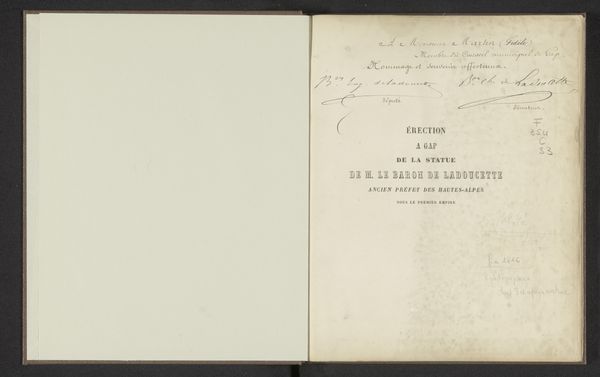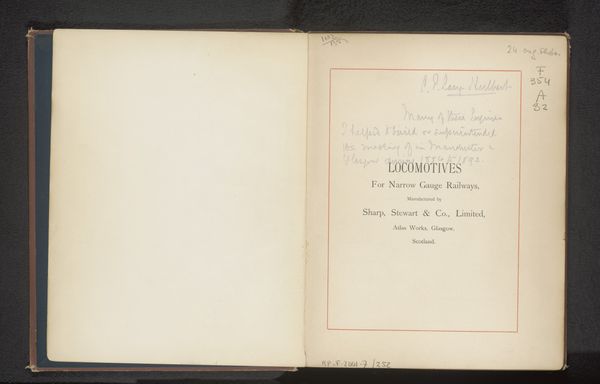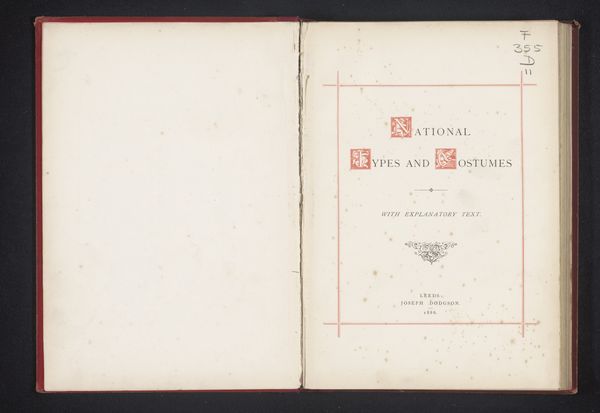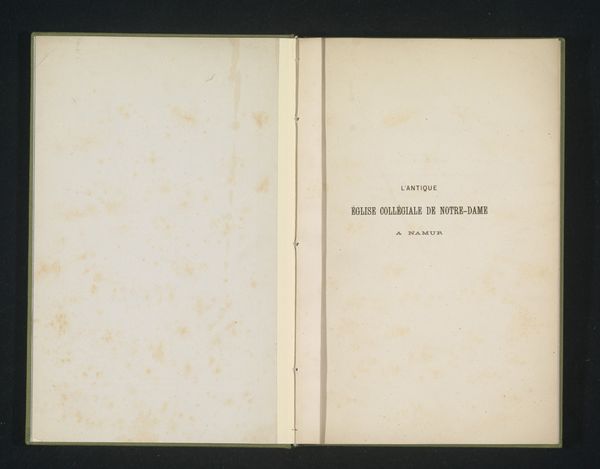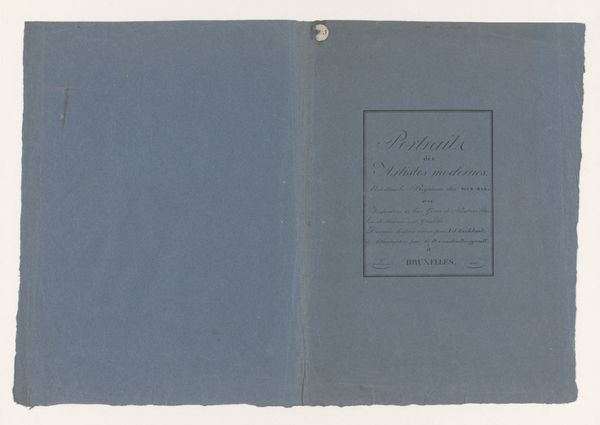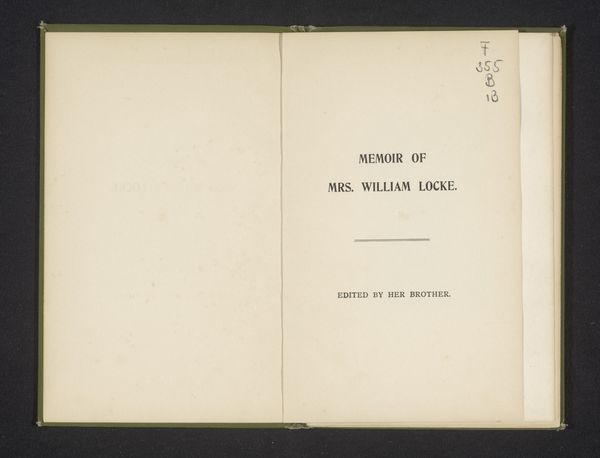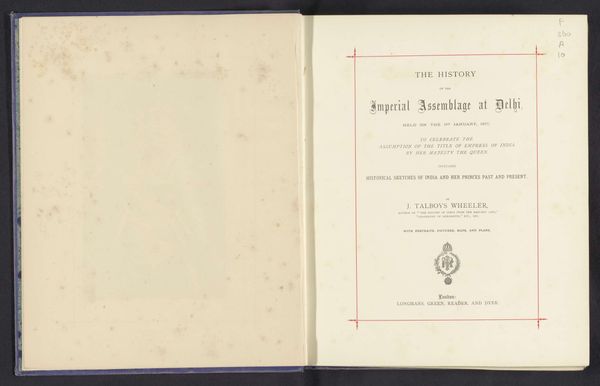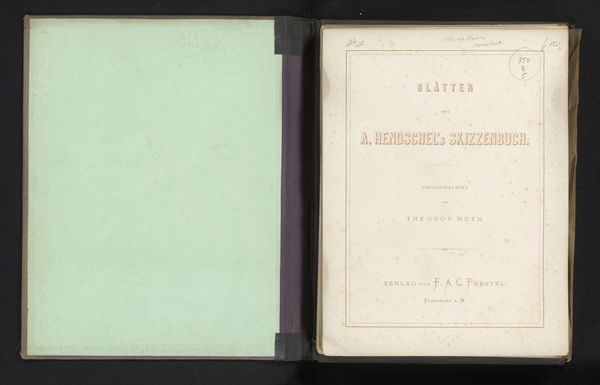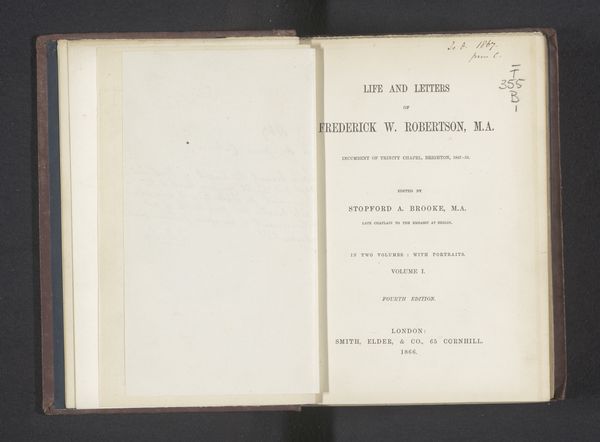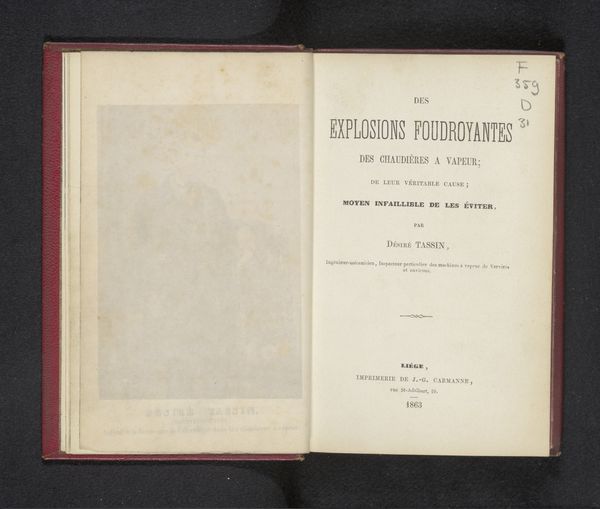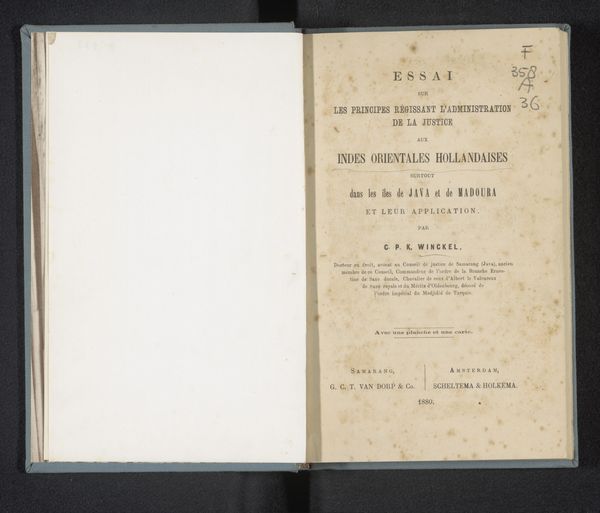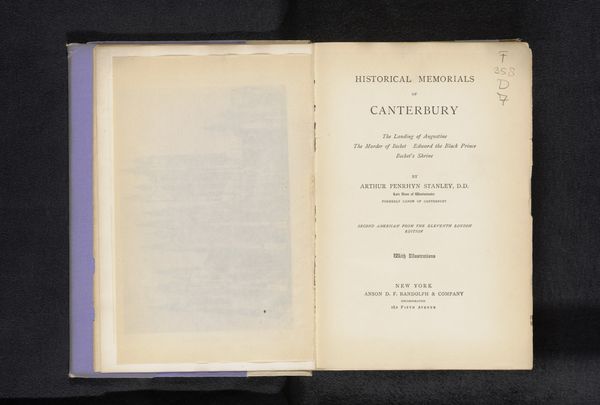
Ricordo di Firenze 24 vedute in fotografia con descrizione = Album of Florence 24 photographic views with descriptive text c. 1871
0:00
0:00
print, photography
#
script typeface
#
type repetition
#
script typography
# print
#
hand drawn type
#
landscape
#
photography
#
hand-drawn typeface
#
fading type
#
thick font
#
cityscape
#
white font
#
handwritten font
#
historical font
Dimensions: height 175 mm, width 260 mm, thickness 14 mm
Copyright: Rijks Museum: Open Domain
Curator: This unassuming spread introduces "Ricordo di Firenze," or "Album of Florence," a collection of 24 photographic views assembled by Giacomo Brogi around 1871. What's your first impression? Editor: It feels like a quiet statement, almost stark. The frame is simple, and the text, though elaborate in its typography, is presented in a way that feels measured. It lacks the ornate grandeur I might expect from an album celebrating Florence. There's a sense of reserved nostalgia, wouldn't you agree? Curator: Absolutely. The very act of compiling these photographs into an album speaks to the rising bourgeois desire for travel souvenirs during the late 19th century. The "ricordo," or remembrance, becomes a commodity, solidifying Florence's place in the collective tourist imagination. Editor: How fascinating to consider this as part of a broader visual culture that actively constructs our understanding of place. Beyond tourism, I’m struck by how the book itself participates in a system of knowledge. What type of individual was Brogi targeting? Did this object reflect or help generate emerging class distinctions? Curator: Those are critical questions! Brogi, himself a Florentine photographer, likely aimed at upper-middle-class Europeans and Americans eager to consume romantic visions of Italy. This aligns with a larger history of Orientalism where Western gazes shaped understandings of “exotic” locales. Though, it is crucial to interrogate those concepts considering internal Western representations. Editor: Right, shifting the paradigm—asking to what extent did Brogi also shape internal concepts of Florentine identity? And thinking more about its role: Was it purely for sentimental remembrance, or did it also serve some practical purpose in circulating particular narratives about Florence? What did these images depict of daily life, labor, wealth? Curator: Considering Brogi's prolific output documenting the city’s landmarks, I suspect it was a bit of both. There’s an aesthetic agenda that also contributes to Florence's image as a center of culture and historical weight. But also, yes, potentially circulating very particular and regulated versions of its social structure. Editor: It also demonstrates that there is a commercialized venture built around experiencing culture and art, packaged as ‘authentic’ cultural encounter through visual shorthand and print. I appreciate seeing it that way. Curator: A valuable reflection that shifts us toward analyzing how even seemingly straightforward collections of photographs perform in complicated and at times conflicting ways.
Comments
No comments
Be the first to comment and join the conversation on the ultimate creative platform.
